QuestionQUESTION: Hi!
I'm house sitting for some friends. My instructions for the care of their flap necked chameleon (I'm from SA# was to mist him with water twice a day, feed him 3-5 crickets every day, and to switch on his UV lamp when it gets cold. His other lamps are always on.
I've been doing this for a week and a half now, and everything was going well. He was hunting, very active, drank his water etc. He's somewhere between 3-5 years old, he was caught wild but has been a pet for the last 3 years.
My problem is that he's been hiding under a branch in his cage for the last 3 days. He literally has not moved an inch. If his eyes weren't moving, I'd think he was dead. He hasn't been eating or drinking. His color is its usual green with white spots, he just looks a bit pale #lighter green than usual). His poop is pure white. Much more than that I cant say. I have never cared for a reptile before. I'm taking him to a vet tomorrow anyway, but I'm not sure if he's sick? I don't see how he could have gotten injured unless he injured himself - he's never really been handeled or tamed, so he never leaves his cage unless its being cleaned out. Which is another reason why I'm concerned - usually when I go near him he hisses and flares and runs away, and now he's not moving??
Any insight and advice would really be appreciated.
ANSWER: Hi Natasha,
From your description so far it doesn't sound overly alarming but I'm glad you have the vet appointment. Chameleons are notorious for "crashing" rather quickly. It will reduce his stress greatly if you can put him in a travel container that allows him to be on a branch and is covered. The white poop is urates (think of bird droppings) which is the equivalent of urine and that's normal. You may or may not see it in combination with a brown fecal portion.
The fact that he is up on his branches with eyes open and with good colour are all positive signs. Sick chameleons generally do the opposite of all those things. You mentioned that he looked a bit paler then usual which could mean that he is about to start shedding his old skin, something reptiles do normally on a regular basis. The lack of feeding and the inactivity are also typical pre-shed behaviour. If you find pieces of white skin on the cage floor or stuck to him tomorrow then you are probably quite safe in canceling the vet appointment. I wouldn't be too worried about his lack of hissing and running etc. Chameleons use that as a last ditch defense and it indicates a very stressed chameleon. Remaining still and camouflaged among foliage is their preferred method to avoid potential predators..... such as pet sitters!
His care sounds good and the lack of handling has probably contributed to his longevity. At 4 or 5 years of age he is getting up there in years. If he was wild-caught as a full grown adult then he could even be a bit older then that.
I was a bit confused by your description of his heating and lighting instructions given to you. You said that you turn on his UV light if it is cold but UV lights are usually fluorescent which produce very little heat. You also said that his other lights are on all the time. Both lights should be on around 10 to 12 hours during the day and then both off at night. That will give him a normal photo-period or day/night light cycle to allow for normal sleep and then trigger normal daytime behaviour like basking. It also gives him a temperature drop at night which is perfectly normal. The advantage of having an animal that is wild-caught and native to your area is that he has evolved to live in the local climate.
I'm glad you mentioned that you are in SA. Many reptiles enter a period of low activity and reduced appetite in the autumn, triggered by cooler temperatures and shorter days. This fall/winter dormancy is frequently noted in captive veiled chameleons which are probably the most commonly kept chameleon species.
---------- FOLLOW-UP ----------
QUESTION: This is not a question - just a follow-up.
Regrding his lighting situation - english is not my first language, I got confused with names of the two types of lights he has. He has a fluorescent white one that stays on all the time (not sure of thats how its supposed to be, but its how the people instructed me to do it), and then he has a heating lamp thats red. The heating lamp I only switch on for him when its cold; since we are in sunny South Africa, heat and humidity isnt something we have to provide artificially on a every-day basis.
And Thea, you are right about the shedding - his skin has started to make big white blisters all the way down his sides. I'm just happy that he's OK and not busy dying!! :D
AnswerHi Natasha,
I'm glad that it turned out to be nothing to worry about. Of course he just had to pick the time that you are caring for him to shed!
I would certainly continue to do just as the owners instructed you about the lights but you might mention to them that it would be healthier for him to have the fluorescent turned off at night. It is the equivalent of them sleeping with their bedroom light on which I'm sure they do not do. It would interfere with them getting a proper night's sleep and it will have the same affect on their pet.
Your English is excellent (I assume Afrikaans is your first language then?), I never would have guessed that you were not a native English speaker.

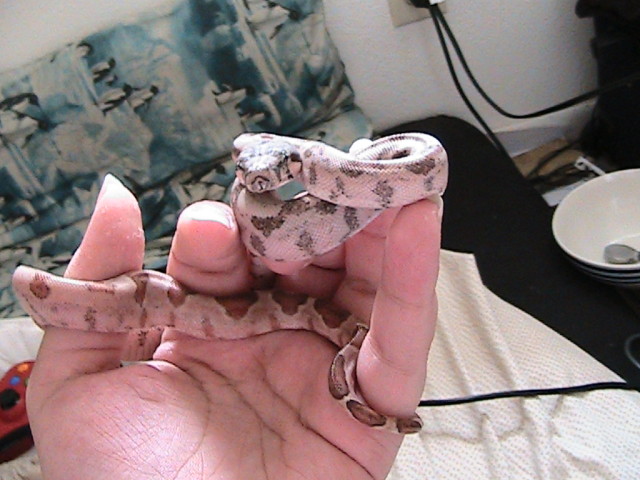 Baby Hog Island
QuestionQUESTION: Hi, my Hog Island Boa is a month old
Baby Hog Island
QuestionQUESTION: Hi, my Hog Island Boa is a month old
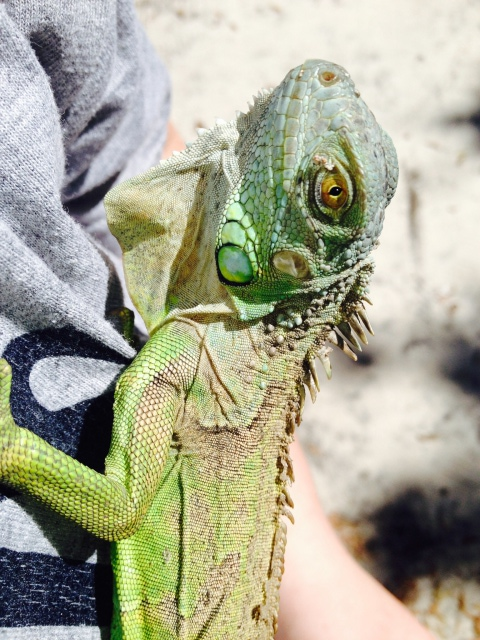 Green iguanas
Question
Green iggy
Hi I have two green iguanas
Green iguanas
Question
Green iggy
Hi I have two green iguanas
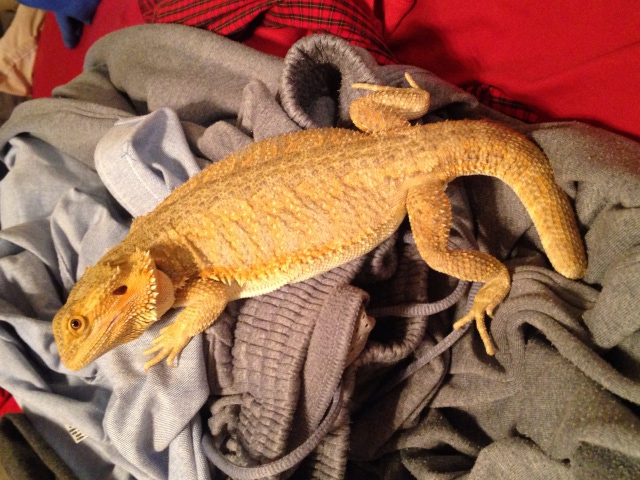 Bearded Dragon - Tish
QuestionQUESTION: Hello. My bearded dragon is abo
Bearded Dragon - Tish
QuestionQUESTION: Hello. My bearded dragon is abo
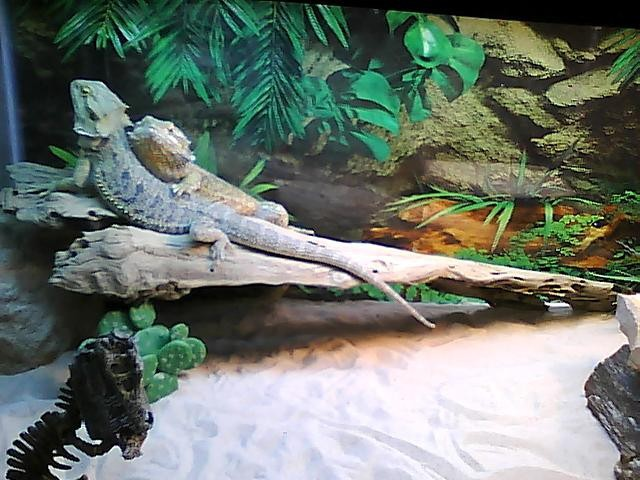 I have all the supplies
QuestionQUESTION: Hello Tracie,
I have everything I nee
I have all the supplies
QuestionQUESTION: Hello Tracie,
I have everything I nee
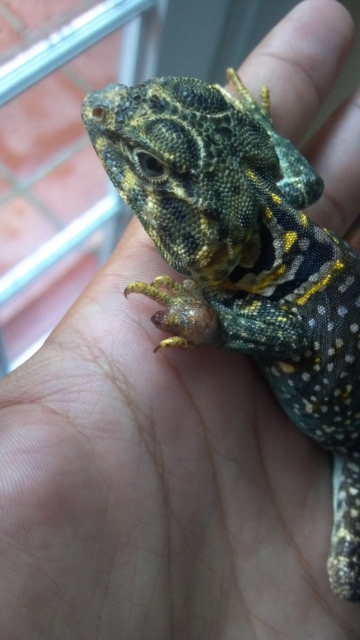 Collared lizard
QuestionQUESTION: Hi, My collared lizards finger has fa
Collared lizard
QuestionQUESTION: Hi, My collared lizards finger has fa